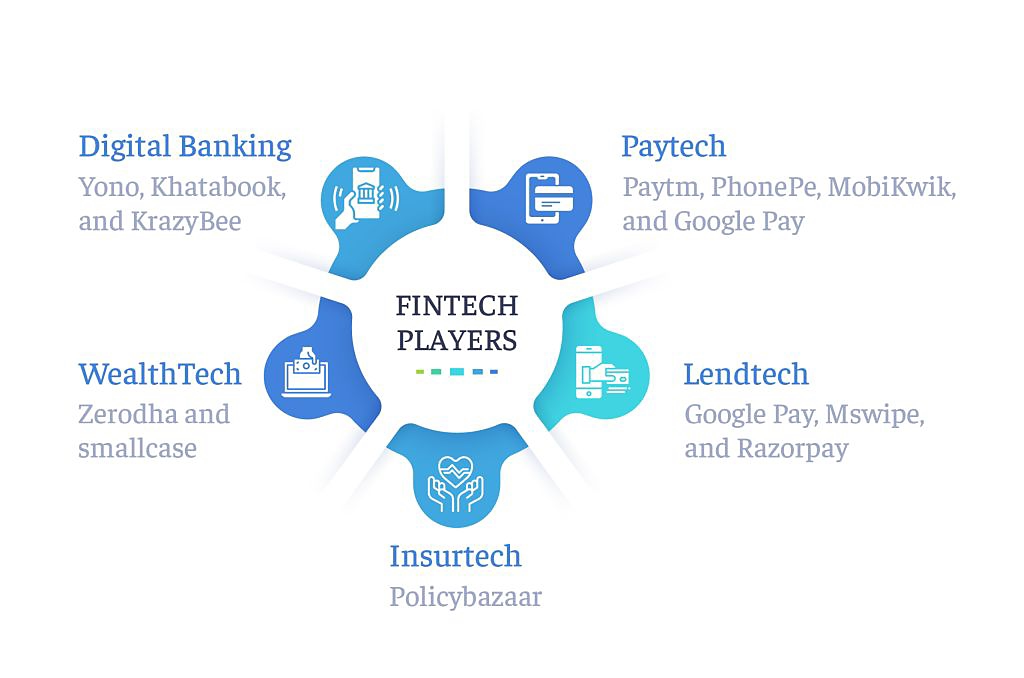Finance-as-a-Service (FaaS): A Global Trend to Reckon With
By Ranjit Jha, MD and CEO, Rurash Financials Pvt. Ltd. |Sep 01, 2022
The upsurge in fintech innovation has given rise to a rapid adoption of Finance-as-a-Service (FaaS) across sectors. Banking without borders is a very real phenomenon, bringing more and more people under its fold. While new financial solutions and applications continue to bear fruit every day, learn about the current trends and benefits from Ranjit Jha, MD and CEO, Rurash Financials Pvt. Ltd., as he talks about how FaaS has transformed the way we bank, invest, or conduct a business.
We live in an era when technology is pervading almost every aspect of human interactions. Right from healthcare services to education, agri-tech firms to telecom and networking, technological disruptions are cascading into our day-to-day lives. This holds equally true for banking institutions and financial services as well, who are consistently aiming to deliver high quality services to a much larger part of the population in the least possible time as they strive for excellence. So, in my view, the infusion of technology has bestowed two-pronged benefits in the form of reach and efficiency, addressing the problems of access and faster processing of financial requirements.
The Gamechangers in the Evolving Face of Fintech
While most other businesses have seen a swifter adoption of tech solutions, it has moved at a relatively slow pace in the finance industry, given the precariousness of handling money, stringent regulatory frameworks, and thus limited scope for experimentation. Today, traditional banks and other non-banking institutions are seeking a cost-effective approach to optimise their end-to-end processes, while staying compliant with regulatory frameworks. This is where FaaS fits in with its future-focussed and agile delivery model, in combination with advanced technologies and intelligent automation. By offering fully integrated accounting, financial, and business strategy streams, FaaS firms consolidate pertinent finance functions for its users under one roof, provide enterprise-level capabilities, and ensure business continuity in a cohesive manner at an enviable cost.[1]
As businesses and traditional banks turn to the rapidly evolving industry of FaaS for their technological needs, customer retention and customer satisfaction emerge as the primary goals.
Being conscious of the time-consuming transactions using legacy processes, banks are leveraging the wave of digital solutions to streamline the way people transact every day—be it lending, credit, or payments—into efficient systems. To this end, the use of Robotic Process Automation (RPA), digital upload of KYC documents (Voter ID, Aadhar card, passport, PAN card etc.), one-time password (OTP) authentication, etc. have come a long way in cutting down transaction times. Banks are now able to disburse their loans faster, processing a higher number of loan applications at possibly remote locations too. Such efficient, customer-friendly, and personalised digital options automatically translate into a superior banking experience, thereby being a win-win for both the consumers and financial institutions.
As technology continues to be an indispensable part of the financial services arena, there is a multitude of disruptors in the form of product model innovations and business model innovations. For instance, with National Payments Corporation of India (NPCI) democratising the entire banking system and the onset of telecom giants like Jio, neobanking[2] has come up as a popular banking solution for today’s tech-savvy generation. These high-impact innovations are not only limited to banking but have opened a whole host of possibilities in the domains of insurance, equity markets, mutual funds, portfolio management services, etc., which still have a handful of players and hence, opportunities aplenty. Being in the financial services sector for over two decades, I would like to share that until three to four years ago, it wasn’t possible for us to service a client in a city like Trichy or a remote place like Yelgam (smaller towns in southern India). But with technology and greater connectivity coming into play, we are able to service far-flung places regularly.
Trends That Herald a Promising Future
In line with the current market trends, FaaS platforms are looking to bridge the gap between traditional legacy institutions and modern-day requirements through their customer-centric approach. There is currently an abundant scope of innovation in the fintech space, giving rise to a plethora of applications, focussed on specific solutions. An industry report points out that the global financial technology market is expected to reach a market valuation of around US$324 million by 2026.[3] Today, there are apps to predict one’s spending habits and investments, and also determine a good time for buying an insurance or procuring a home loan. Furthermore, with a global adoption rate of 25%, the industry is replete with opportunity for fintech firms.[4]
Some of the trends that have proven their worth in revolutionising the fintech space are blockchain technology, providing a robust infrastructure to the credit and insurance industry and helping firms gauge whether a borrower will repay the loan or not. Open Banking is benefitting customers/businesses with new insights on managing their capital and providing access to personalised services. At the same time, it is helping companies determine user solvency before extending their services to them. Cryptocurrencies have seen their ups and downs, but with a stronghold of government regulations, they seem likely to stay. Buy Now Pay Later (BNPL), Internet of Things (IoT), biometric authentication, and the largely automated processes, all form an integral part of the fintech revolution.
Benefits of Riding the Fintech Wave
As shared earlier, all sectors, be it finance or non-finance related, are benefitting from the upsurge of technological disruptions. Some of the notable positives in my view are:
- A boon for startups: In times like these when businesses are mushrooming in almost every part of the country, digitalisation comes as a godsend for entrepreneurs in need of structured financial services and faster access to capital. Building a multifaceted in-house financial team catering to multiple functions of accounting, business strategy, and quality insights may be exorbitant and not an option when one is starting out. So, having this entire stack of services available under one platform not just eases the process of running the business at a reasonable cost but also eliminates any room for error and the stress that comes with it. Moreover, startups are heavily dependent on funding and despite great business models, they may struggle to ensure the next round of funding. To ensure consistent funding opportunities, they must focus on creating a product that stands out and solves a real problem for its users. Thanks to fintech innovation at multiple fronts, paperless, prompt, and automated processes are enabling entrepreneurs to focus on the product and business aspect of their ventures. Personally, I believe in democratising financial services to make these accessible for people who wish to start-up. Some of the services like Loan Against Securities cater to such requirements, thereby simplifying loans like an overdraft facility with superior benefits.
- Enabling MSMEs: Micro, Small, and Medium Enterprises (MSMEs) are traditionally one of the highest contributors to GDP and foster employment opportunities at a large scale. These small businesses were worst affected by the pandemic, experiencing a severe economic downturn. Even though numbers are slowly picking up, the MSME sector received a share of 18% in the total credit to the industry as per a report.[5] Access to timely credit remains an impediment to their success. Meanwhile, the fintech ecosystem is fulfilling related gaps at a quick pace. MSME-focussed tech products built over the last three years have shown rapid adoption and it is estimated that about 10% of the MSMES would rely completely on technology to run their business by the end of 2022.[6] Tech products have eased business operations and data-backed decision-making involving due-diligence on potential customers and stakeholders has resulted in better financial outcomes. Moving money has perhaps never been easier. The transparency of carrying out transactions, advanced security while making payments, reduced costs, greater convenience, and efficiency while availing loans, all add up to give a better customer service experience and instil confidence amongst the businessowners.
- Efficient government ecosystems: Due to tech coming into finance, black economy is getting suppressed as everything stays accounted for and traceable. The government and tax agencies are leveraging tech innovations to become more efficient and transparent while ensuring compliance. For instance, GST collections have been soaring and recorded a 28% growth over last year at ₹1.49 lakh crore in July 2022, marking the second highest revenue collection since the Goods and Services Tax (GST) regime was launched.[7] Taxation is more regularised with an increased number of people filing taxes online. Distributed ledger technology (DLT) is ensuring that this record-keeping stays on for posterity, creating an immutable database.
Some of the key players catering to specific segments that have transformed user experience in my opinion are:
These players have capitalised on the opportunity and innovated their business models staying mindful of the product-market fit. For instance, Zerodha attracted widespread audience as it was the first-ever stock brokerage company offering discount options to investors and traders, keeping costs low for them, and thereafter innovating to cover a wide range of products related to account management, financial education, mutual funds, risk management, etc.
Channelling Innovation and Investments: What Lies Ahead
Data analysis of the banking and investment transactions is opening doors to further innovation. Studying this larger dataset combined with advanced tools such as artificial intelligence (AI), machine learning (ML), augmented reality (AR), and virtual reality (VR) is bringing in more efficiency and simplifying complex information, enhancing user engagement. For instance, AI-backed robo-advisors are helping individuals and institutions explore potential investment opportunities, providing necessary triggers involving promoters, auditors, profits, shares, etc., almost pre-empting the future of an investment.
Funding has remained a crucial element to sustain innovation happening around the fintech space and support the ongoing trends. As we work towards carving India’s growth story, it is also imperative to ensure certain policy level changes to make it the destination of choice for foreign investments. Interestingly, foreign insurance penetration in the country increased significantly when the foreign direct investment (FDI) capping changed from 26% to 49% in 2015. FDI inflows have increased steadily thereafter, and India recorded the highest ever FDI inflow at US$83.57 billion in FY21-22.[8] In my view, changing FDI rules, giving tax sops to investors and a better business environment, supported by growing tech will allow better access to services in India from anywhere in the world. Greater access leads to greater demand for early investments.
[1] Cournoyer, K. (n.d.). What Finance-as-a-Service Actually Means? https://www.growthlabfinancial.com/what-finance-as-a-service-actually-means
[2] A neobank is a digital bank without any branches, and operates entirely online Instead of having a physical presence at a set location.
[3] Team Finezza. (December 4, 2021). The Coming of Age of Fintech-as-a-Service (FaaS). https://finezza.in/blog/age-of-fintech-as-a-service/
[4] Market Data Forecast. (2022). Fintech Market. Size, Share, Growth 2022-2027. https://www.marketdataforecast.com/market-reports/fintech-market
[5] Soni,S. (March, 2021). Bank credit to micro, small businesses up over 6% in December from year-ago amid Covid, shows RBI data. Financial Express. https://www.financialexpress.com/industry/sme/msme-fin-bank-credit-to-micro-small-businesses-up-over-6-in-december-from-year-ago-amid-covid-shows-rbi-data/2204775/
[6] Patro, W. (April 17, 2022). The changing face of SMEs: Here’s what to expect in 2022. The Times of India. https://timesofindia.indiatimes.com/blogs/voices/the-changing-face-of-smes-heres-what-to-expect-in-2022/
[7] EquityPandit. (August 1, 2022). GST Collection Soars 28% YoY, 2nd Highest Since Introduction. https://www.equitypandit.com/bank-credit-to-micro-small-enterprises-jumps-23-in-june-rbi-data/
[8] Ministry of Commerce and Industry. Press release (Release ID: 1826946). https://pib.gov.in/PressReleasePage.aspx?PRID=1826946

Ranjit Jha, MD and CEO, Rurash Financials Pvt. Ltd.
Ranjit Jha leads Rurash Financials, a boutique investment firm specialising in financial services with an aim to be one of the benchmark fintech ventures in India. An investment professional turned business promoter, Ranjit is passionate about creating a disruptive marketplace for personalised and unbiased financial services. With a career spanning 20+ years in the investment and wealth management domains, his expertise lies in asset management, sell-side equity, and fundamental equity analysis. Ranjit is now on a mission to simplify financial services for Indian retail investors.





